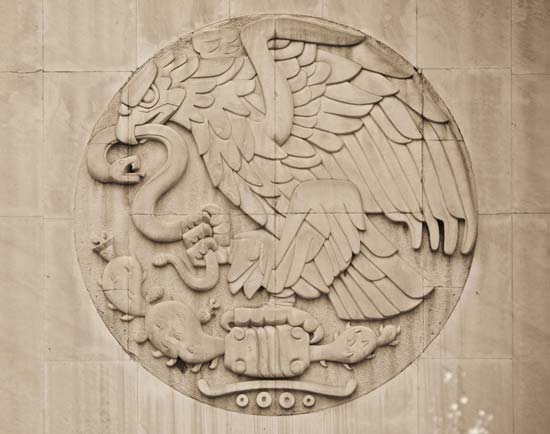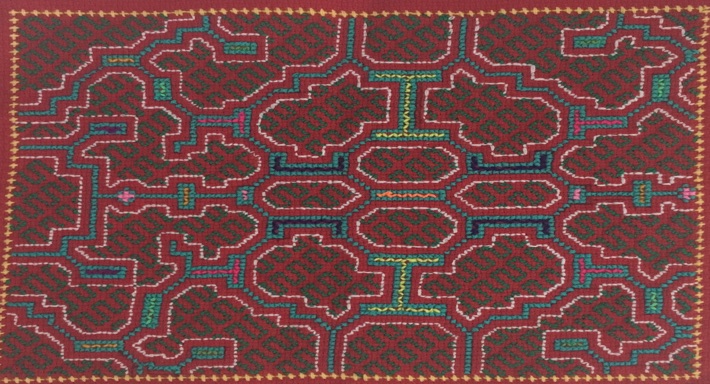The Symbolic Guide to Artemis

We live in a world filled with symbolism. Certain concepts come to mind when we see particular symbols whether we are consciously aware of it or not, we are affected. Symbols can be used to maintain a paradigm or transform it. I started this painting over a year ago and then abandoned it for nearly 8 months until I was re-inspired after reading about semiotics. A lot of the time I will have an image pop into my head and I will start to paint, as was the case with this image, but without a clear story that goes along with what I am painting.
One of my favorite Rainer Maria Rilke quotes of all time goes, “Be patient toward all that is unsolved in your heart and try to love the questions themselves, like locked rooms and like books that are now written in a very foreign tongue. Do not now seek the answers, which cannot be given you because you would not be able to live them. And the point is, to live everything. Live the questions now. Perhaps you will then gradually, without noticing it, live along some distant day into the answer.” My painting process often follows the trajectory of this cherished quote: it begins with an image (the question) … time goes on, I don’t paint, the painting gathers dust, as I gather stories and experience. Then one day I revisit it with some of the answers and a story to tell. Images are a very powerful form of storytelling and I passionately believe a part of the remedy needed for world healing is breathing life back into forgotten wisdom, indigenous cultures, alternative values and mythologies, through the images and symbols that we share.
A particular passage in “The Homeland, Aztlan” by Gloria Anzaldua inspired this character to come to life. What sparked the symbolism in my painting was in direct reform to the image below that I came across in reading “The Homeland, Aztlan." Gloria Anzaldua explores the history of the native peoples of America and colonization by Europeans. She writes, “Huitzilopochtli, the God of War, guided them to the place… where an eagle with a writhing serpent in its beak perched on a cactus. The eagle symbolizes the spirit (as the sun, the father); the serpent symbolizes the soul (as the earth, the mother). Together, they symbolize the struggle between the spiritual/celestial/male and the underworld/earth/feminine. The symbolic sacrifice of the serpent to the “higher” masculine powers indicates that the patriarchal order had already vanquished the feminine and matriarchal order in pre-Colombian America.” (Anzaldua)

After reading this I began to contemplate the impact of symbols as representatives of dominate culture, thought, and dynamics. What would this symbol look like re-defined. I wanted to move away from symbology that represented “power-over” and represent a "power-from-within" and in harmony with the masculine and feminine. I became fascinated with creating a symbolic representation of the divine goddess, feminine power and a matriarchal order. One that was also in harmony with the masculine. Instead of following the format of "power-over" seen in the image of the eagle eating the snake. The Artemis character incorporates the masculine power into her by wearing the horns and also lightly holding the masculine representation (the stag), not defeating or suppressing it. This is power in harmony with other powers. Artemis the wild woman also represents to me, wild land, and raw nature.
“Magic is art-- that is, it has to do with forms, with structures, with images that can shift us out of the limitations imposed by our culture in a way that words alone cannot with visions that hint at possibilities with the fulfillment not offered by the empty world.”(Starhawk,14)

Decode the symbols present in this painting:
Artemis: The Greek Goddess of the hunt, the wilderness, the moon, child birth and wild animals. In ancient art, Artemis is often accompanied by a stag, or depicted with a crescent moon in her hair. She was the protector of nature and the hunt, both wild and tame. She is also known as the virgin goddess. Virgin in Latin means "maiden, unwedded girl or woman," also an adjective, "fresh, unused," I appreciate this second meaning, as a woman and the land not yet touched, used, or exploited. In many stories of Artemis, men spy on her bathing naked in the woods and try to rape her, but being a goddess she evades them. Punishing them in many cases by turning them into a stag. For me this character also felt like an appropriately association as a fierce representation of the wild feminine protecting herself. My desire to paint a goddess image is perfectly summed up in this Starhawk quote, “For women, the symbol of the Goddess is profoundly liberating restoring a sense of authority and power to the female body and all the life processes: birth, growth, lovemaking, aging, and death. In Western culture the association of women and nature has been used to devalue both. The imagery of the immanent Goddess imparts both to women and nature the highest value.” (Starhawk ,11)
Horns: In many very old earth based spiritual traditions horned animals were revered. This can be seen as far back as Upper Paleolithic Period Cave paintings of deer, bison, aurochs, ram etc. (1) The horns or antlers in many rituals and spiritual practices represented the masculine, vigor, fertility, power, God, mental and spiritual strength. In many Pagan traditions the antlers of the stag directly represent the fertility of God. They are a symbol of power and strength. The Hebrew word "keren" means power as well as horn. According to an article I read, “Christianity, too, sought to discourage the pagan worship of horns and depicted the Devil himself as wicked with bestiality, and thus horned.” (2) I want to take back the appropriation of the horn symbol as something evil and give power back to the earth and Goddess, to the feminine life force by having her wear the horns with a positive connotation, not an evil one.
Full Moon/Horns: “The image of a stag with a full moon between his antlers represents both the male (the antlers) and the female (the moon) aspects of the Divine.” (2)
Crescent Moon/Star(Venus): “OSRAM NE NSOROMMA” Meaning "The Moon and the Star" is the African Adinkra Symbol of love, faithfulness, and harmony. This symbolizes harmony between the bonding of a man and a woman. (3)
Snake: The snake as in Anzaldua symbol represents the feminine and the earth. It also to me represents the snake in the garden of Eden, the snake of wisdom and knowledge, if perhaps forbidden knowledge.
Shipibo Icaros Design on snake tattoo: The design on the snake is of the sung Shipibo Icaros, this is the "Song to Gain Deep Wisdom." I incorporated this pattern into the snake to represent the snake in the Garden of Eden, as the snake of wisdom. The Shipibo of the Amazon rainforest in Perú believe that the Icaros designs represent the Cosmic Serpent, the great Mother, and creator of the universe to them called ‘Ronin Kene’. The Shipibo Icaros represent a form of synesthesia: “The Shipibo can “listen” to a song or chant by looking at the designs, and inversely paint a pattern by listening to a song or music.” (4)

Works Cited:
Starhawk. “The Burning Times: Notes on a Crucial Period of History.” Dreaming the Dark; Magic, Sex Politics. Boston; Beacon Press, 1982.
Anzaldua, Gloria. “The homeland, Aztlan.” Borderlands/La Frontera. San Francisco: Aunt Lute Books, 1987, 1-13
